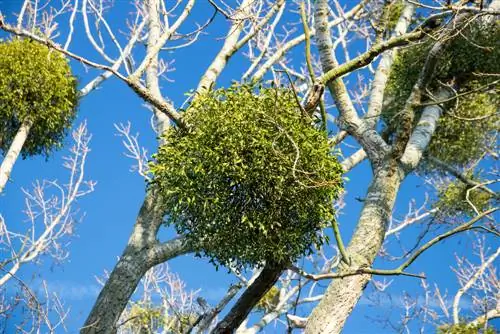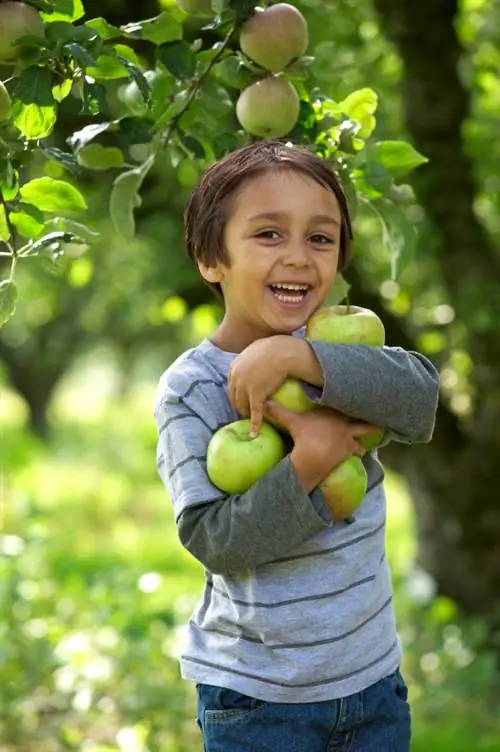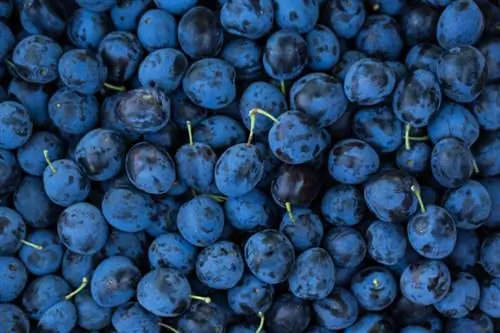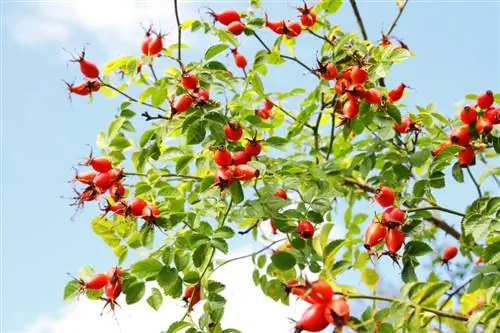- Author admin [email protected].
- Public 2023-12-16 16:46.
- Last modified 2025-01-23 11:22.
Mistletoe has been considered a mystical miracle plant for thousands of years that is said to protect against evil spirits and illnesses. Some customs have been preserved to this day, so that the parasites have become a popular collector's item.
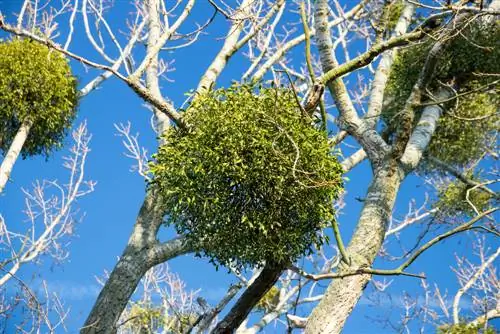
When and how do I harvest mistletoe?
The best time to harvest mistletoe is from November to December or between March and April by cutting off the mistletoe bushes with a hand saw or scissors. Use a telescopic saw if ladders are not available.
Harvesting Notes
Mistletoe is harvested from November to December and between March and April. When harvested in spring, the bushes have inconspicuous flowers, as the flowering period extends from January to April. The berries ripen during Advent. Mistletoe bushes can be cut off completely with hand saws or in parts with scissors. A telescopic saw (€45.00 on Amazon) proves helpful if you don't have a ladder at hand.
Native species
In Germany there are two species that are distantly related. To find mistletoe, you need to know its preferred host plants. The plant parts are not suitable for consumption because they contain poisonous ingredients.
White-berry mistletoe
This shrub-like semi-parasite belongs to the actual mistletoe and has the botanical name Viscum album. The plant colonizes branches and trunks mainly of deciduous trees. It is found on fruit trees, maple, linden, birch, poplar and willow. Hornbeams and hawthorns are also among the preferred hosts. The species thrives particularly well on robinias and produces broad leaves.
Tip
Look for mistletoe in overgrown orchards, because old apple trees are a paradise for mistletoe.
Oak mistletoe
This species with the scientific name Loranthus europaeus belongs to a different genus and is rarely found in Germany. It prefers growing places with dry air and likes warm summer months. In contrast to the white-berry mistletoe, this plant is summer green.
Danger to trees
Mistletoes are parasites that remove nutrients from their host plants. Since old trees are weakened, the shrub-like plants find optimal points of attack. When the seeds germinate, a tube develops beneath the cotyledons. This ends in a suction disk. The tube penetrates the cell tissue of the host plant so that the parasite can extract nutrients from the channels. In old orchards, the mistletoe growth can be so heavy that the survival of the tree is in danger.
How to reduce an infestation:
- Check trees regularly in winter
- Cut mistletoe close to the trunk
- Eliminate new parasites directly

